Vegetable Lists
-
How to identify Tomato late Blight and Botrytis cinerea
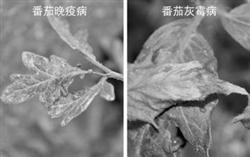
Late blight and Botrytis cinerea are important diseases that seriously affect the yield and output value of tomato in spring cropping facilities in North China. Early detection and accurate identification is the premise of effective prevention and control. The field symptoms often vary with different varieties and environmental conditions, and they are easy to be confused with each other or with other diseases, which puzzles growers.
2018-09-11 -
Spring cultivation techniques of Mini Pumpkin
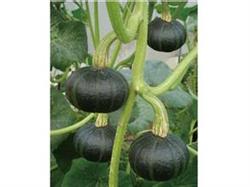
Mini pumpkin is a hybrid bred by Suzhou vegetable Research Institute. It has medium growth potential, dark green leaves, 2.0-2.5 m long stem, short internodes and medium branches. Both main and lateral vines can bear melons. Strong adaptability, fast growth, high yield, small size, golden color, good taste, suitable for long distance.
2018-09-11 -
Key points of cultivation techniques of small pumpkin in spring
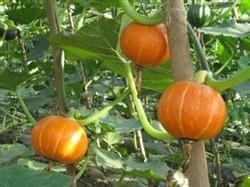
1. Suitable sowing time: spring sowing in greenhouse from mid-January to early February, seedling age 20-25 days; open field cultivation in small arch shed, sowing in mid-and late February, seedling age 20-25 days, planted in small arch shed in early and middle March. Second, seed treatment and sowing: pumpkin seeds soaked in water for 3-4 hours, then 50% carbendazim 500 times solution.
2018-09-11 -
How to make a pumpkin in spring
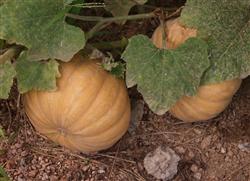
Spring open field cultivation techniques 1, sowing and seedling: the pumpkin varieties introduced above belong to the western pumpkin type, spring cultivation is suitable for early sowing, sowing date can be calculated according to the planting period. Such as Jianghuai, can be planted in late April, with seedling age of 30 days, should be planted in late March. If you want to go to a certain place...
2018-09-11 -
Intercropping cultivation techniques of cauliflower and pumpkin in spring
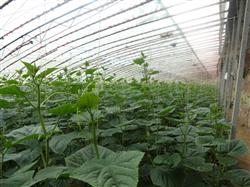
When it comes to hanging vines in the arch shed pumpkin in spring, many vegetable farmers will choose one-word hanging vines. One-word hanging vines only need to lift the two vines of the pumpkin side by side, so that the hanging vines are faster. However, due to the large leaves of pumpkin, it appears to be very crowded at the beginning, which is not conducive to pumpkin coloring. Jitai Town, Shouguang City, Shandong Province.
2018-09-11 -
Cultivation techniques of Pumpkin in greenhouse in Spring

First, the variety chooses Beijing green chestnut and Beijing red chestnut pumpkin. 2. The suitable sowing time for pumpkin cultivation in spring greenhouse is generally mid-February. 1. Before raising seedlings, the temperature is relatively low when sowing in the first and middle of February, so the electric hotbed must be used to raise seedlings. (1) the manufacture of electric hotbed: choose to transmit light.
2018-09-11 -
High-yield cultivation and Management techniques of Ginger in North China
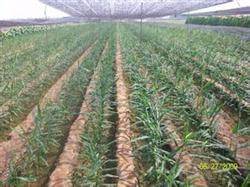
First, prepare before sowing. 1. Fine soil preparation and application of sufficient base fertilizer. The plots with fertile soil, good irrigation conditions and no ginger blast should be selected to avoid repeated cropping as far as possible. On the basis of winter ploughing, fine soil preparation should be carried out as early as possible in spring, so that the soil can be loosened and fruited without light and dark. Increase the application of organic fertilizer, with high-quality chicken manure, no disease and disability.
2018-09-11 -
New varieties of High quality Pumpkin and their cultivation techniques in Spring
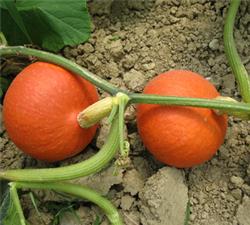
Pumpkin is a kind of nutritious and healthy vegetable, while the western pumpkin imported from abroad has less water content, more solids, more non-reducing sugar and starch, more starch / whole sugar ratio, less crude fiber and high crude protein content. therefore, the taste and taste are good, and the quality is much better than that of domestic pumpkins.
2018-09-11 -
Spring sowing and Seedling raising techniques of Western Pumpkin
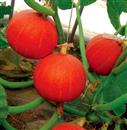
1. Prepare seedling bowl (specification: 10 cm × 10 cm × 8 cm) and nutritious soil (50% mature organic fertilizer, 50% field sandy loam, mix well) before sowing. Before sowing, the seeds should be treated, the shrunken seeds and deformed seeds should be removed, the full seeds should be selected, and the seeds should be dried for 1 or 2 days in sunny days.
2018-09-11 -
Cultivation techniques of western pumpkin in greenhouse in spring
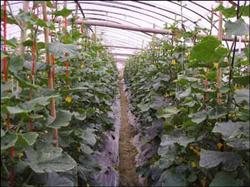
1. At present, there are many varieties of western pumpkin. According to the results of comparative test of varieties introduced by our institute, "Dongsheng" and "Yipin" selected by Taiwan Nongyou seed Company, "orange red" series and "Lubao & quot..." selected by Jiangsu Zhengda seed Co., Ltd., Zhengda Group of Thailand.
2018-09-11 -
Cultivation techniques of Western Pumpkin in Spring greenhouse
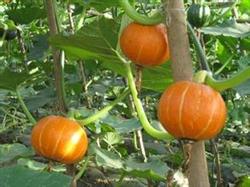
Pumpkin is a kind of nutritious and healthy vegetable, while the western pumpkin imported from abroad has less water content, more solids, more non-reducing sugar and starch, more starch / whole sugar ratio, less crude fiber and high crude protein content. therefore, the taste and taste are good, and the quality is much better than that of domestic pumpkins.
2018-09-11 -
Cultivation techniques of early ripening Japanese Pumpkin in Spring
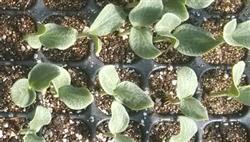
Japanese pumpkin, also known as western pumpkin, is a new type of vegetable pumpkin introduced from Japan, South Korea and other places as a high-quality pumpkin in recent years. This kind of pumpkin has compact and fine meat, sticky or powdery, excellent flavor and small fruit shape. When harvested as a vegetable, its single melon weighs 1 kg.
2018-09-11 -
Seedling raising techniques of stand cultivation of Pumpkin in Solar greenhouse in Winter and Spring
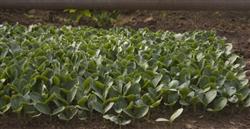
The sowing date of ① is mainly determined by the heat preservation of solar greenhouse. The solar greenhouse with good lighting and good heat preservation can sow seeds and raise seedlings in late November. The melon was harvested in the middle of March in the second year, on the contrary, the sowing date can be postponed to January of the following year. Using the above-mentioned solar greenhouse, generally sowing from late December to early January of the following year.
2018-09-11 -
Cultivation techniques of Honey Pumpkin in Spring
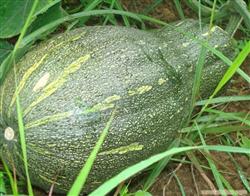
Honey pumpkin plant creeping grape growth, single melon weight 2 to 3 kilograms, fruit about 36 cm long, transverse diameter 14.5 cm, melon hammer-shaped, ripe fruit orange-yellow, meat thick, orange-red, delicate starch, sweet taste, high quality. Early and middle maturity, harvest 85-90 days after planting, spring planting from January to March, autumn planting from July to August, yield per mu 2000 kg. ...
2018-09-11 -
Formula fertilization technique for high yield of ginger
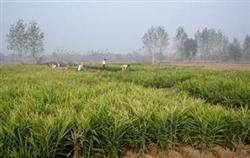
Ginger has a long growing period and requires a large amount of fertilizer. under medium fertility conditions, it generally produces 2500 kg of ginger per mu, which requires 25 kg of nitrogen, 10 kg of phosphorus (P2O5) and 30 kg of potassium (K2O). The absorption ratio of nitrogen, phosphorus and potassium is 11 ∶ 1 ∶ 16 or 1 ∶ 0.5 ∶ 2.
2018-09-11 -
Comprehensive Control techniques of Ginger Rot
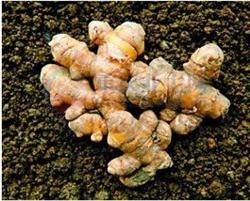
1. Choose disease-free ginger seeds and seed ginger for disinfection. Leave seeds from disease-free areas or select disease-free ginger, soak the seeds before sowing with 50% carbendazim wettable powder for 6 hours, or soak the seeds with 2000 times of neophytin for 24 hours. two。 Ginger selection and disinfection. The pathogen can survive in the soil for more than 2 years.
2018-09-11 -
High-yield formula fertilization technology of ginger
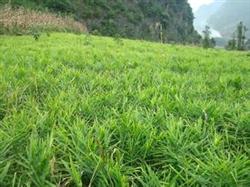
Ginger has a long growing period and requires a large amount of fertilizer. under medium fertility conditions, it generally produces 2500 kg of ginger per mu, which requires 25 kg of nitrogen, 10 kg of phosphorus (P2O5) and 30 kg of potassium (K2O). The absorption ratio of nitrogen, phosphorus and potassium is 11 ∶ 1 ∶ 16 or 1 ∶ 0.5 ∶ 2.
2018-09-11 -
Storage technology of ginger
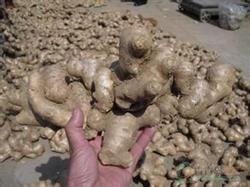
Ginger is a perennial herb of Zingiberaceae. It is not only a commonly used traditional Chinese medicine, but also an important vegetable for export to earn foreign exchange. Due to the wide use and large amount of ginger, coupled with the characteristics of warm and cold, wet and dry, it is particularly important to do a good job of ginger storage and preservation. First, before storage.
2018-09-11 -
Control techniques of diseases and insect pests in ginger
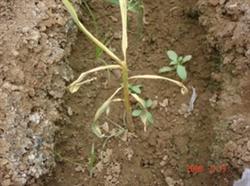
(1), ginger blast 1, pathogen: bacterial disease, Ralstonia solanacearum. 2. symptoms of diseased plants: the leaves were drooping and dull at first, then withered yellow from bottom to top, and finally withered and died. The stem first immersed in water from the base, yellowed, withered, and broke and lodged from the base. The rhizome is immersed in water, browned and rotten, squeezed.
2018-09-11 -
How to effectively control ginger stem rot
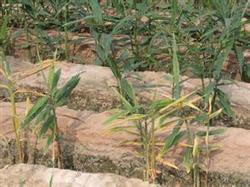
In recent years, with the continuous expansion of ginger continuous cropping area and extensive field management, the disease of ginger is also aggravating, especially since June, because of high temperature and rain, ginger stem rot is the most likely to occur. Recently, Li Hualiang and Lu Changlei in Renzhao Town, Pingdu City, Shandong Province, and Yu Wanquan in Ju County reflected that.
2018-09-11
